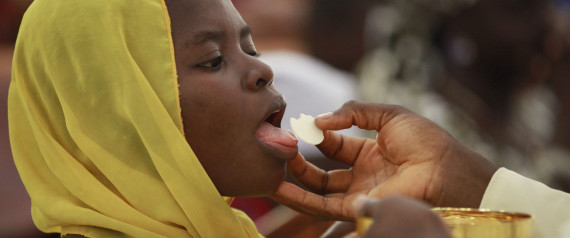Everyone knows this is an important question—so how should Catholics answer it?
Many Catholics just don’t know what to say when someone asks them whether they are saved. However, there’s really no reason to be confused, because the Catholic understanding of salvation in Christ gives the perfect answer, and Katrina Zeno is here to explain it.
As Catholics, we’re vaguely familiar with "saved" language. We don’t usually ask someone, "Are you saved?" and when someone asks us this question, we often stutter and fumble for an answer. So how should we answer: "Are you saved?" Constantly.
We are constantly being saved by the incarnation, death, and resurrection of Jesus Christ. Why? Because salvation is dynamic, ongoing. It’s a past, present, and future reality. Let me explain.Salvation is a past reality: We have been saved by the death of Jesus Christ. While we were still sinners, Jesus’ death canceled the bond that stood against us (Col. 2:14). In other words, the guilt of original sin has been wiped away. God pardoned our sins. But being pardoned isn’t the same as being holy.
Being pardoned gives us back our freedom to choose the road to holiness, to walk the narrow path. Right now, today, we are being saved. Grace is wooing us down the narrow path. We are becoming holy. Salvation is an ongoing event.
We can easily verify salvation as an ongoing event—just look at the world around us. If salvation was a past event, then Mother Theresa and Pope John Paul II would be a dime a dozen. Instead, they shine like stars in the darkness. The world is a cultural and spiritual battleground—a collision between the culture of life and the culture of death.
This, however, is nothing new. St. Paul described man’s predicament in these terms: "What happens is that I do, not the good I will to do, but the evil I do not intend. But if I do what is against my will, it is not I who do it, but sin which dwells in me" (Rom 7:19-20).
Whether you’re St. Paul, Pope John Paul II, or living in St. Paul, the reality is the same: We are being saved because grace has not yet fully transformed every area of our mind, emotions, desires, and will into the mind, emotions, desires, and will of Christ.
And when this transformation takes place, what will we be? The body of Christ. We will be one with Christ. Too often we think of salvation in terms of what we’re saved from. It’s absolutely critical to be saved from hell, damnation, and the stain of original sin, but what are we saved for?
This is the ultimate question and the reason why salvation is a present and future reality. We are saved for union with Christ. Or, to put it in more poetic terms, we are saved so that the two may become one.
Wow, what a completely different view of salvation! Salvation is not only a legal event where the guilty prisoner is set free (hallelujah!), but a nuptial event—the two becoming one. God and man becoming one.
God and I becoming one.
If this is true—if salvation means the two becoming one—then our view of what "saves" us needs to back up. Scripture is quite clear that we are saved by the cross of Christ, but what makes the cross possible? It is the Incarnation, God and man becoming one in the person of Jesus Christ. The Incarnation is the supreme nuptial event of salvation history and, therefore, it reveals what we are saved for—the two becoming one.
This nuptial re-union of each person and God is only one dimension of salvation. The two becoming one also extends to the body and the spirit, to each person and his neighbor, to nation and nation. Salvation is a multi-layered affair because sin was a multi-layered affair.
Original sin not only ruptured man’s relationship with God (being cast out of the Garden), but it also ruptured Adam and Eve’s relationship with each other and creation, and their inner harmony of body and spirit (i.e., St. Paul’s lament).
Nuptial salvation, then, cannot simply mean being saved from God’s wrath or punishment. Nuptial salvation is the freedom to become successively and ever more profoundly one with the Trinity. It is the re-marriage of body and soul in love and harmony. It is the wedding of social and economic systems with Christ so as to restore human dignity and create "one new man from us who had been two" (Eph 2:15).
Finally, salvation is a future event. After the veil of this life is ripped in two, we shall be fully liberated to become one, but not all at once. In God’s mysterious and progressive plan, our nuptial salvation is completed only with the resurrection of the body.
It is then that body and soul will return to perfect unity, and in this perfect unity, we will enter into perfect unity with the Trinity. The two will truly and definitively become one—body and soul, God and man, man and neighbor.
Then, when we confront that old question: "Are you saved?" we can answer "Finally!"



No comments:
Post a Comment